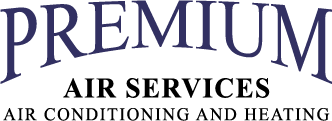
If you have a newly constructed house in Tomball, it was probably made with energy efficiency in mind. This means greater amounts of insulation and windows and doors with better seals. While these enhancements are good for keeping your utility bills economical, they’re not so excellent for your indoor air quality.
Your home comfort system needs to operate with a filter. But if you have a flat filter, you won’t be receiving adequate filtration. This style only delivers the smallest amount of protection by blocking dust from infiltrating your heating and cooling system.
While you can get a pleated filter or one with a increased MERV rating, it still might not be adequate filtration, even more so if someone in your house has allergies or other respiratory problems.
That’s where a whole-house air purifier can be a good option. These systems are placed within ductwork to provide strong filtration throughout your home. Depending on the type you choose, you’ll be able to remove allergens, odors and even some viruses under certain airflow conditions.
Here are our best solutions from Lennox, an industry leader in air purification.
Best Air Purifiers from Lennox
1. HEPA Air Purifiers
A HEPA air purifier, like the Healthy Climate® High-Efficiency Particulate Air Filtration System, gives the best filtration. These filters were first created to protect scientists as they created the atomic bomb. Today, they’re essential in hospitals and other medical settings.
The Healthy Climate HEPA Filtration System has a three-step filtration procedure. A prefilter catches bigger particles before the HEPA filter captures the rest of smaller irritants. Then, a charcoal filter takes care of odors and chemical vapors.
The PureAir™ S Air Purification System connects to all HVAC brands and seamlessly connects with your smart home. It reduces the three leading varieties of indoor air contaminants:
- Airborne particles
- Chemical odors and vapors
- Germs and bacteria, under certain airflow conditions
This air purifier can remove 99.9%* of pollutants, including mold spores, pollen, dust and pet dander. It’s also capable of decreasing or destroying 90%1 of flu and cold viruses under certain airflow conditions. And, as the result of laboratory and field studies, it reduces and eliminates approximately 50% of your home’s odors and chemical vapors within 24 hours.
The PureAir S includes sensing features that make it easy to maintain. When used with an iComfort® S30 smart thermostat, you’ll get a notification to change the filter and UVA light.2 This home air purifier must be used with communicating Lennox systems and the iComfort S30.
2. Media Air Cleaners
Lennox Healthy Climate® Media Air Cleaners are made in a variety of MERV ratings to work with your needs. This rating determines how good filters are at trapping contaminants. The greater the number, the better the filtration.
The Healthy Climate Carbon Clean 16® Media Air Cleaner is ideal for households with allergy suffers and pets. This is a HEPA filter air purifier, because it has a MERV 16 rating for hospital-grade filtration. And it removes more than 95%3 of unhealthy particles from your residence’s air.
The Healthy Climate 13 Media Air Cleaner is great for homes who want better protection from viruses and bacteria. This filter traps 99% of larger particles like dust, pollen and lint. And up to 54% of smaller particles down to 0.3 microns.4
The Healthy Climate 11 Media Air Cleaner is a a great air purifier for allergies and in houses with pets. It catches more than 87% of bigger particles down to 3 microns and more than 28% of finer ones down to 0.3 microns.4 It’s able to provide this strong filtration without driving up the price of using your heating and cooling system.
These three media air cleaners work with any brand of HVAC system. But despite that, it’s essential to be aware that some of the more substantial ones, like MERV 16 and 13, may restrict your system’s airflow. This can inflate your energy expenses.
3. UV Air Purifiers
The sun’s UV rays are the reason why you get a stinging sunburn. But this type of light has a useful application when concealed in your ductwork. It’s also powerful enough to eliminate germs, mold and fungi under certain airflow conditions.
In actuality, the Healthy Climate UV Germicidal Light can reduce the concentration of airborne microorganisms by 50% in as short as 45 minutes.5 This light damages cell structure, which prohibits these microorganisms from growing and spreading around your house.
And this UV air purifier can also help keep your heating and cooling system clean and operating properly. It wipes out of germs, mold and fungi that are hidden in ductwork and your system itself. This UV light air purifier achieves all this work without developing lung-aggravating ozone.6
Breathe Easier with the Support of Our Air Purification Professionals
Your family’s comfort and health is important to us at Premium Air Services LLC. We know there are lots of possibilities out there. That’s why we make it easy to work with our indoor air quality professionals. We specialize in creating solutions that meet your needs and budget, and we’d love to find out more about your house and your air quality challenges. Reach us at 713-364-1078 today to begin.
1Based on laboratory and field studies.
2PureAir™ S requires the iComfort® S30 and a communicating indoor unit.
3Leading consumer magazine, January 2012. Based on the published CADR, which is the standardized measurement system to determine the cubic feet of clean air produced per minute. Particles captured range in size down to 0.3 micron. One micron = 1/25,000 of an inch in diameter.
4Based on lab tests conducted on filters with conditions included in ASHRAE standard 52.2 for E1 and E3 size ranges.
5Based on constant circulation of air in the home, 3,000-square-foot home with a 5-ton air handler.
6U.S. Environmental Protection Agency, “Ozone Generators that are Sold as Air Cleaners: An Assessment of Effective and Health Consequences,” August 2006.
